Analysis of Speech Structure: 'My Three Cultures' by Sandra Baltz
VerifiedAdded on 2023/04/24
|5
|915
|418
Homework Assignment
AI Summary
This document offers a comprehensive analysis of the speech structure in Sandra Baltz's 'My Three Cultures'. The analysis begins with an overview of the speech, which focuses on cross-culturalism and family values, as presented at the University of Memphis. The assignment addresses two key questions: how cross-culturalism fosters harmony and how to embrace it. It then delves into the concept of testimony, differentiating between expert and lay testimonies used in the speech, and assesses their appropriateness. Furthermore, the assignment critiques the speech's structure, evaluating the introduction, body, and conclusion, and identifies areas for improvement, particularly in transitions and clarity. The analysis also references the importance of understanding different cultures and provides relevant examples from the speech.
1 out of 5
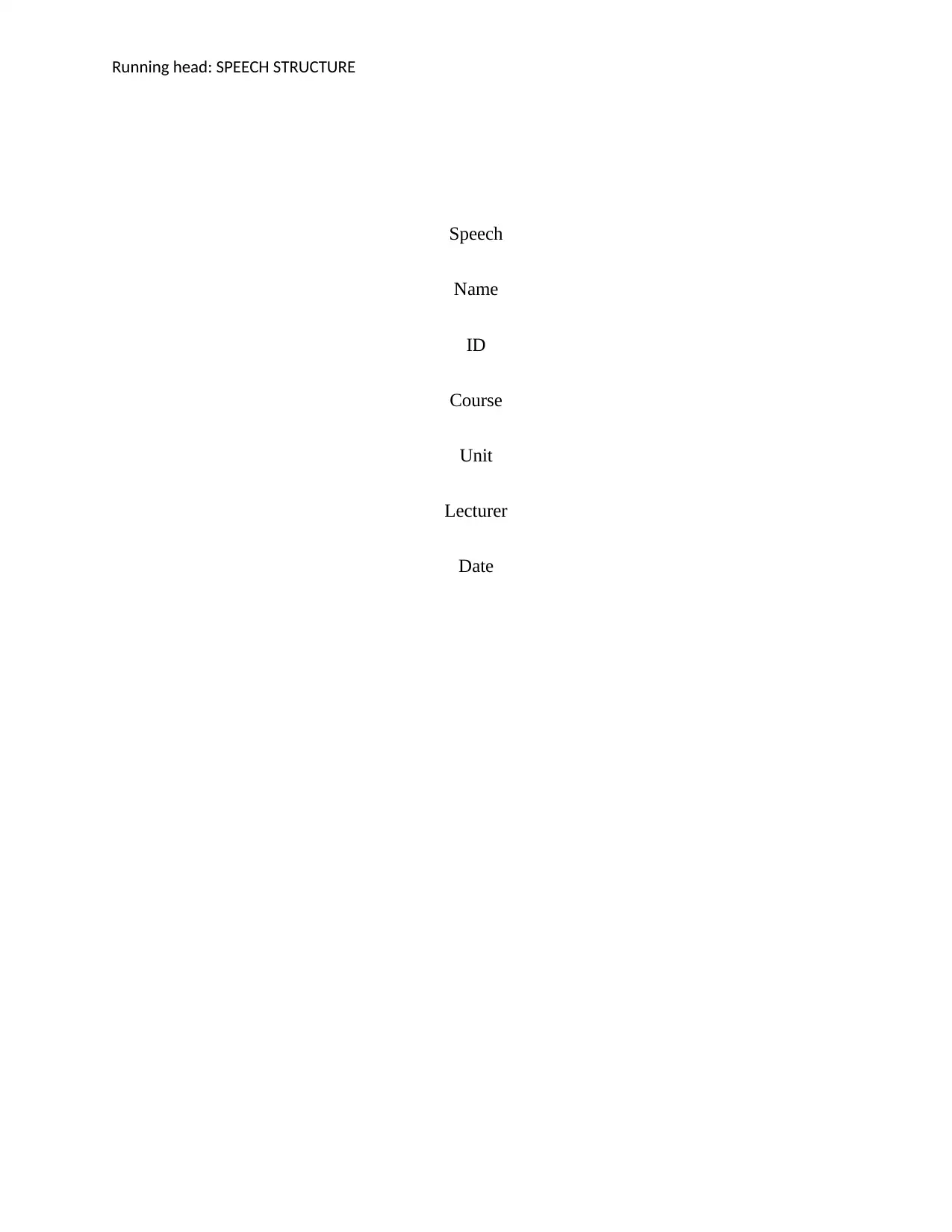
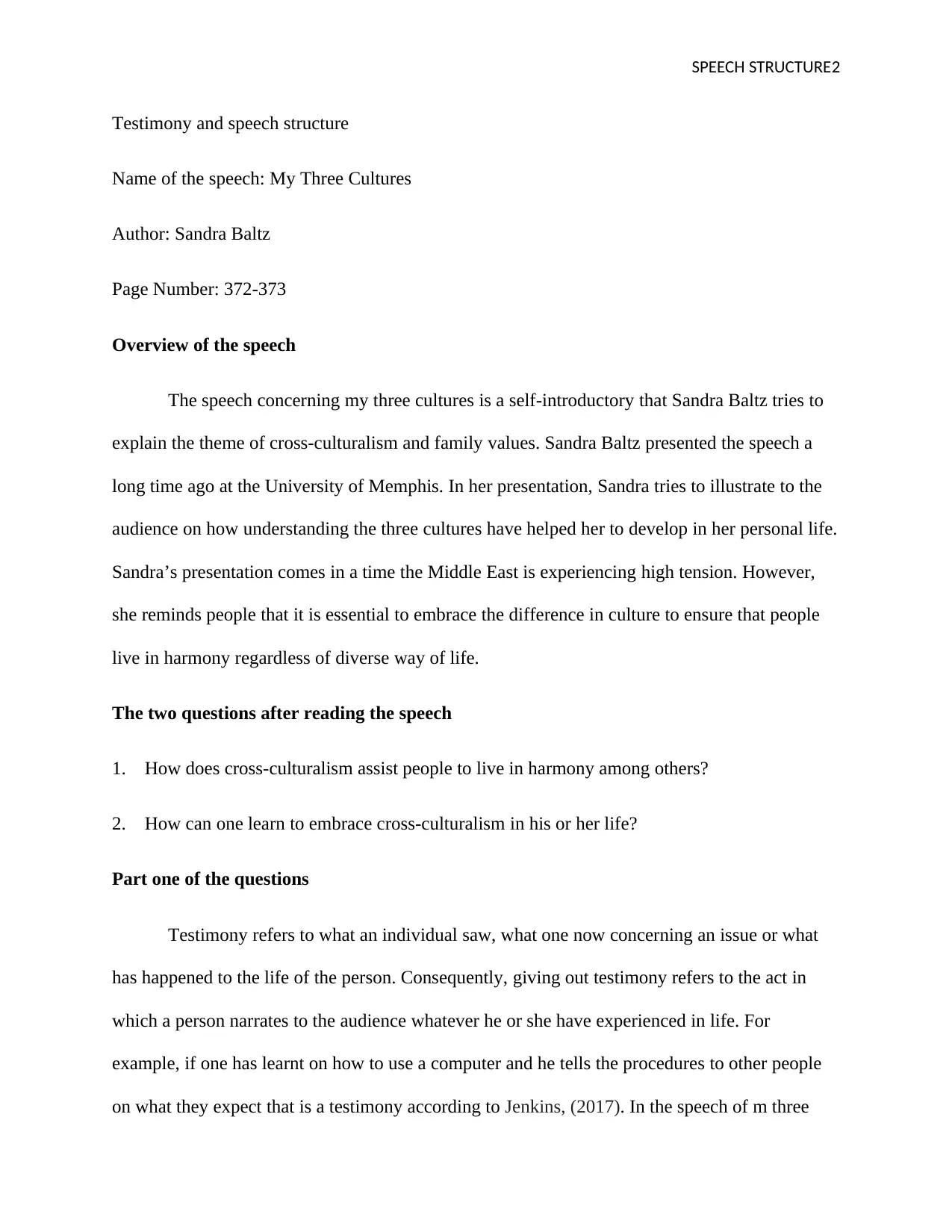
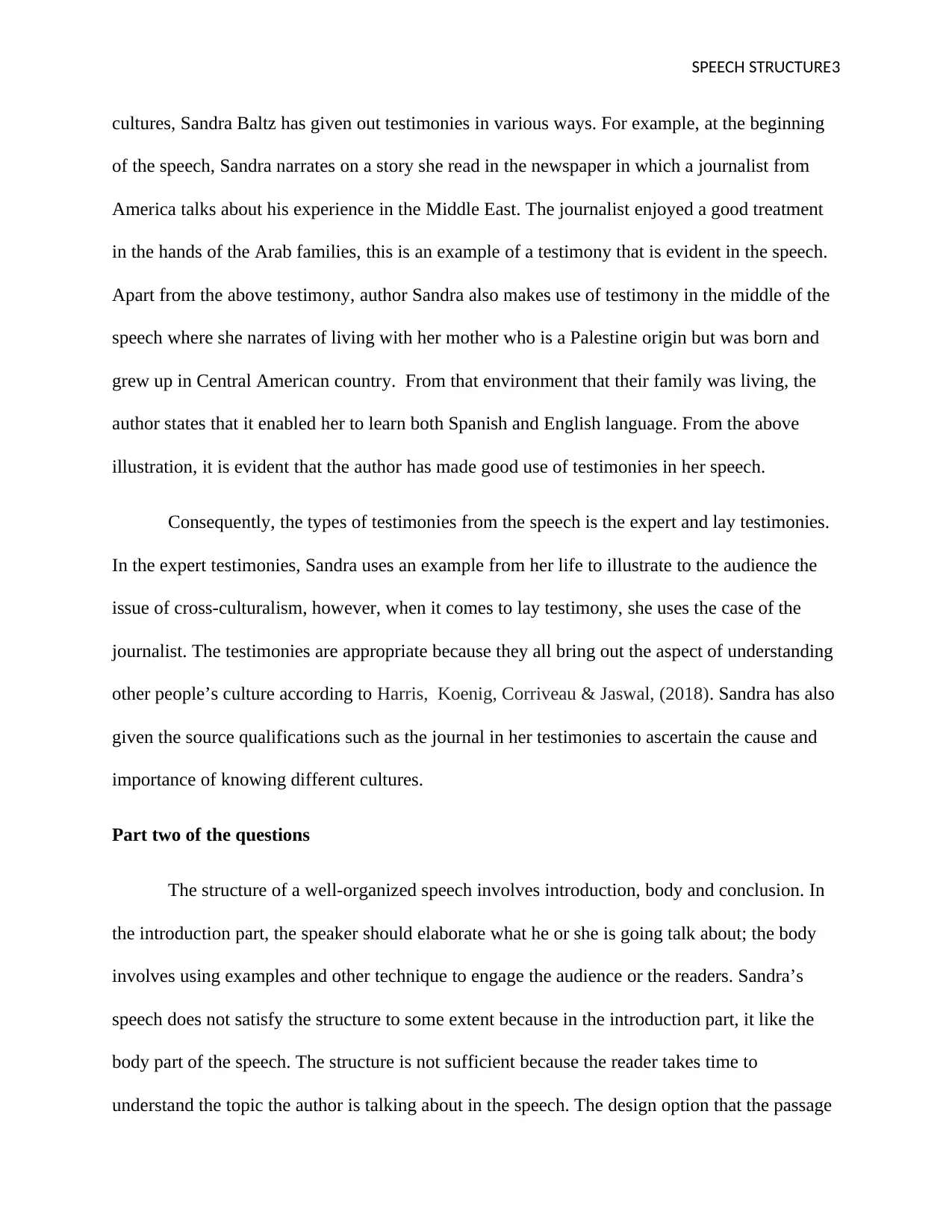

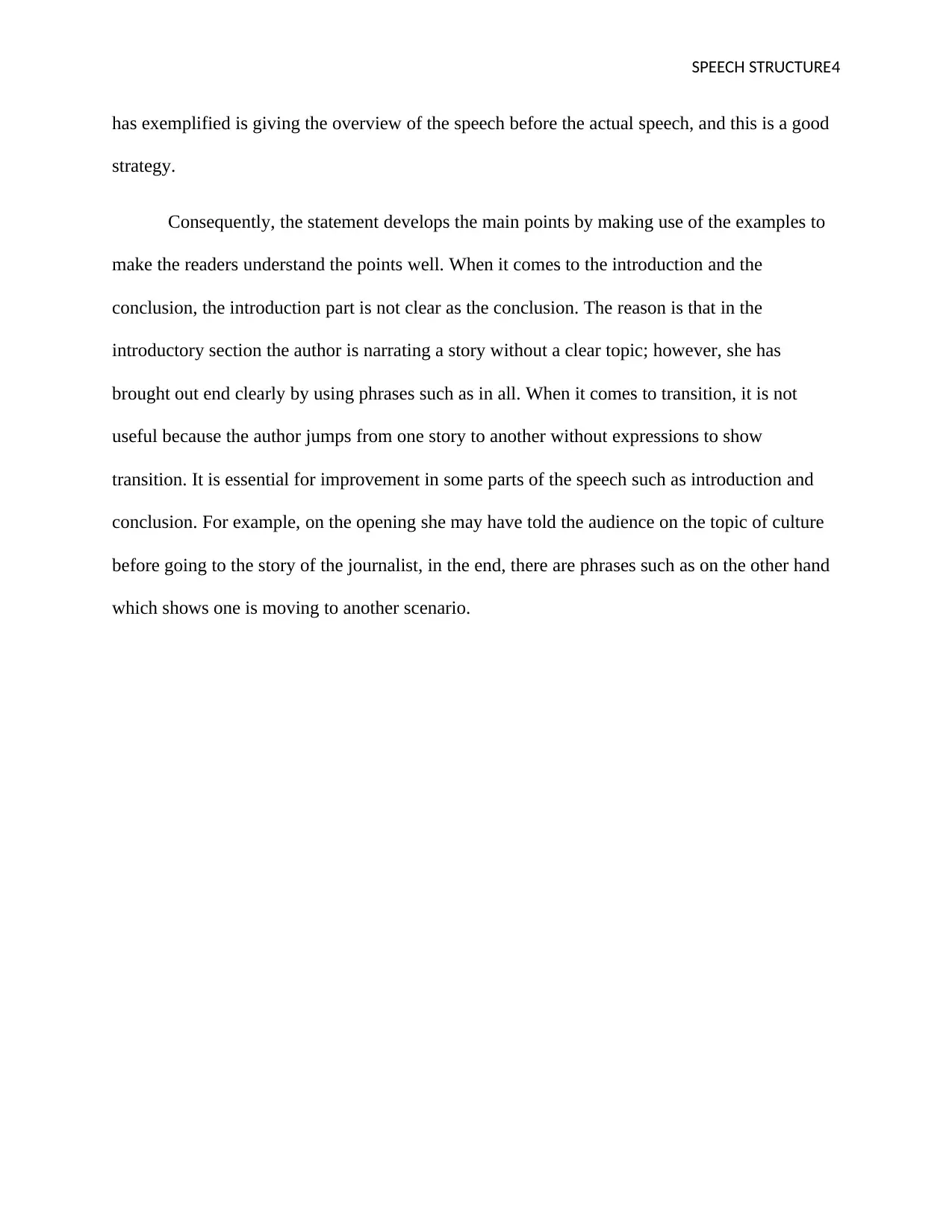
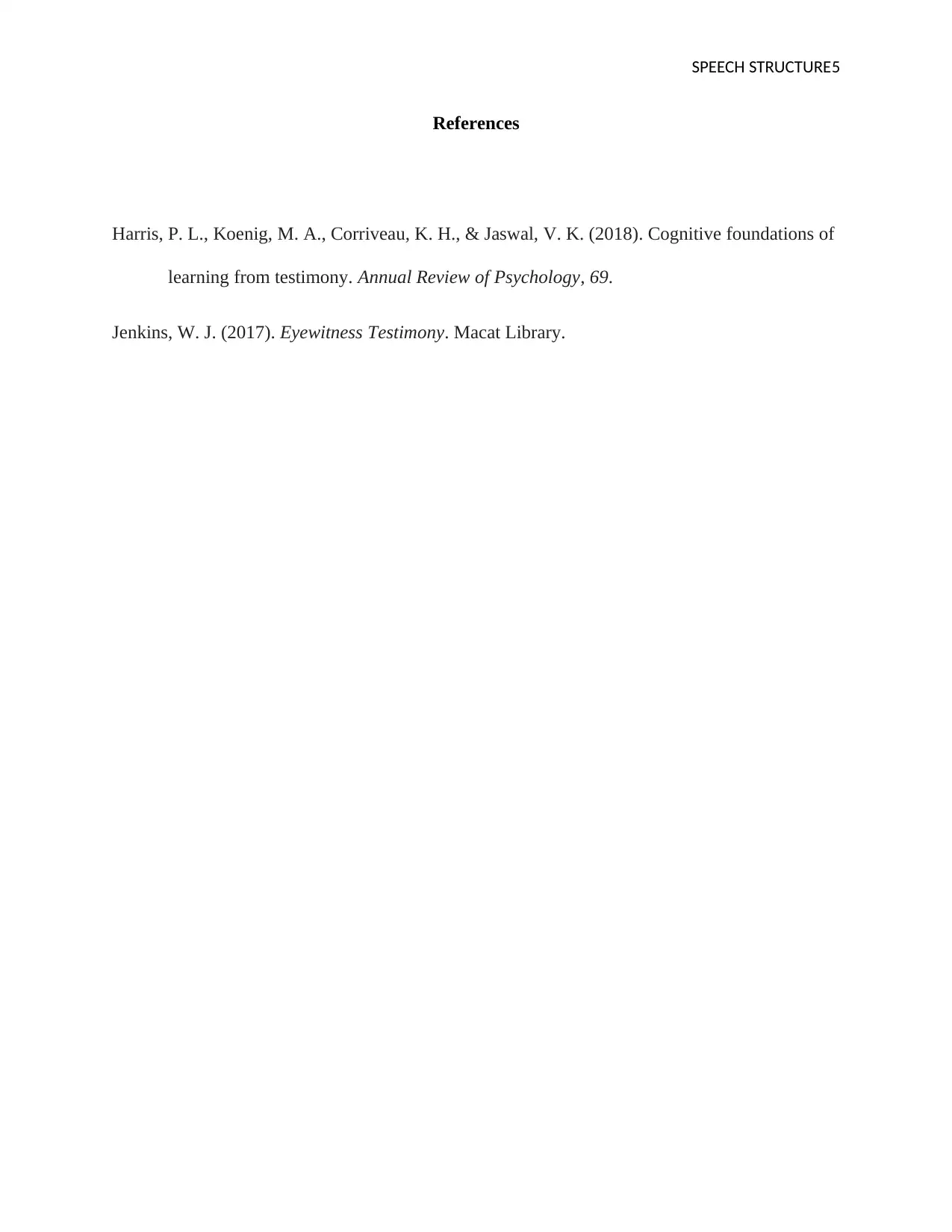
![[object Object]](/_next/static/media/star-bottom.7253800d.svg)